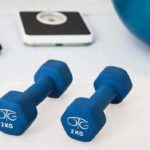Eclipse: the future is here

Dr. Brian Wallace
by Dr. Brian Wallace
Total shoulder arthroplasty has become a popular and successful surgery to treat advanced glenohumeral arthritis.
Shoulder replacement surgery is usually recommended for people who have severe pain in their shoulder and have found little or no relief from more conservative treatments.
When a patient fails conservative management such as: physical therapy, activity modification, cortisone injections- total shoulder arthroplasty is a great surgical treatment.
The shoulder is a ball and socket joint. The ball is the upper part of the arm bone (humerus) and is called the humeral head. The socket is smaller and is part of the shoulder blade (scapula). The ball is held in the socket by ligaments and the rotator cuff tendons. The rotator cuff muscles start on the shoulder blade and turn into tendons which attach to the ball.
Today, about 53,000 people in the United States have shoulder replacement surgery each year, according to the Agency for Healthcare Research and Quality. This compares to more than 900,000 Americans a year who have knee and hip replacement surgery.
Total shoulder replacement is a very successful operation and the 10 year survival rate is up to 90 percent. The US Food and Drug Administration announced clearance of the new Arthrex shoulder replacement system named Eclipse in July 2019.
The Eclipse was developed with Dr Peter Habermeyer in Munich and Dr Anthony Romeo in NYC for treating osteoarthritis and post-traumatic arthritis.
The implant was originally released in 2005 in Europe. It has been available in Canada for the last 5 years. In Europe and Canada, there have been more than 20,000 successful implants of the system during the past 14 years.
Successful clinical trial performed in accordance with the US Food and Drug Association requirements prior to release in the United States. Clinical success published in a 9 year post operative study in the Journal of Shoulder and Elbow Surgery.
 The system is an alternative to a long-stem device that has to be drilled into the bone with a much smaller, stemless implant that’s fixed in place by a screw that promotes bone growth. The previous system involves a longer stem which means more bone loss to get the implant fixed in place. The unique cage screw fixation method allowing for bone in growth and compression of the trunnion plate against the patient’s humeral cut.
The system is an alternative to a long-stem device that has to be drilled into the bone with a much smaller, stemless implant that’s fixed in place by a screw that promotes bone growth. The previous system involves a longer stem which means more bone loss to get the implant fixed in place. The unique cage screw fixation method allowing for bone in growth and compression of the trunnion plate against the patient’s humeral cut.
Eclipse offers a fast, simple, efficient and bone conserving method of performing shoulder replacement. Simplified instrumentation and technique results in reduced operative time and therefore decreased blood loss and infection risk.
Should the patient need the implant revised in the future, the Eclipse allows simplified revision with maximized bone preservation. The typical postoperative course after shoulder replacement is a sling for a period of 4 weeks. The return to activities of daily living progresses after that with return to more active activities in the 4-6 month range.
A study in the World J Arthroplasty in 2016 looked at the return to sports after shoulder replacement. The rates of return to sports following total shoulder arthroplasty (75%-100%) are slightly higher than those reported for half shoulder replacement (67%-76%) and reverse total shoulder replacement (75%-85%).
Patients undergoing total shoulder replacement, reverse total shoulder replacement, and half shoulder replacement should be counseled that there is a high probability that they will be able to return to their preoperative activity level within six months postoperatively. That is great news for patients looking to stay active and enjoy the sports they love.
The Eclipse total shoulder replacement is the next great advancement in the technology for patients who need a shoulder replacement. Its minimally invasive design will benefit both the patient and treating surgeon. It will quickly become the gold standard in shoulder replacement surgery.
Dr. Brian Wallace is a sports medicine orthopedic surgeon at the Joint Replacement Institute in Naples. He has worked extensively with athletes at the high school, college, and professional levels, including the Cincinnati Reds Major League Baseball team, the USTA/ITF World Tennis Tour, and the QBE Shootout team golf event on the PGA Tour.
Dr. Wallace currently serves as the head team physician for Ave Maria University, where he works with athletes to assure their quick return to sport. His interests in orthopedics include arthroscopic treatment of the shoulder, elbow, and knee as well as general orthopedic care. He also has extensive training in joint reconstruction and fracture care and is expertly trained in nonoperative treatments such as stem cell therapy and platelet-rich plasma (PRP) therapy to help patients heal faster. Contact Dr. Wallace at Joint Replacement Institute, (239) 261-2663
or www.jointinstitutefl.com.




Leave a Reply
Want to join the discussion?Feel free to contribute!